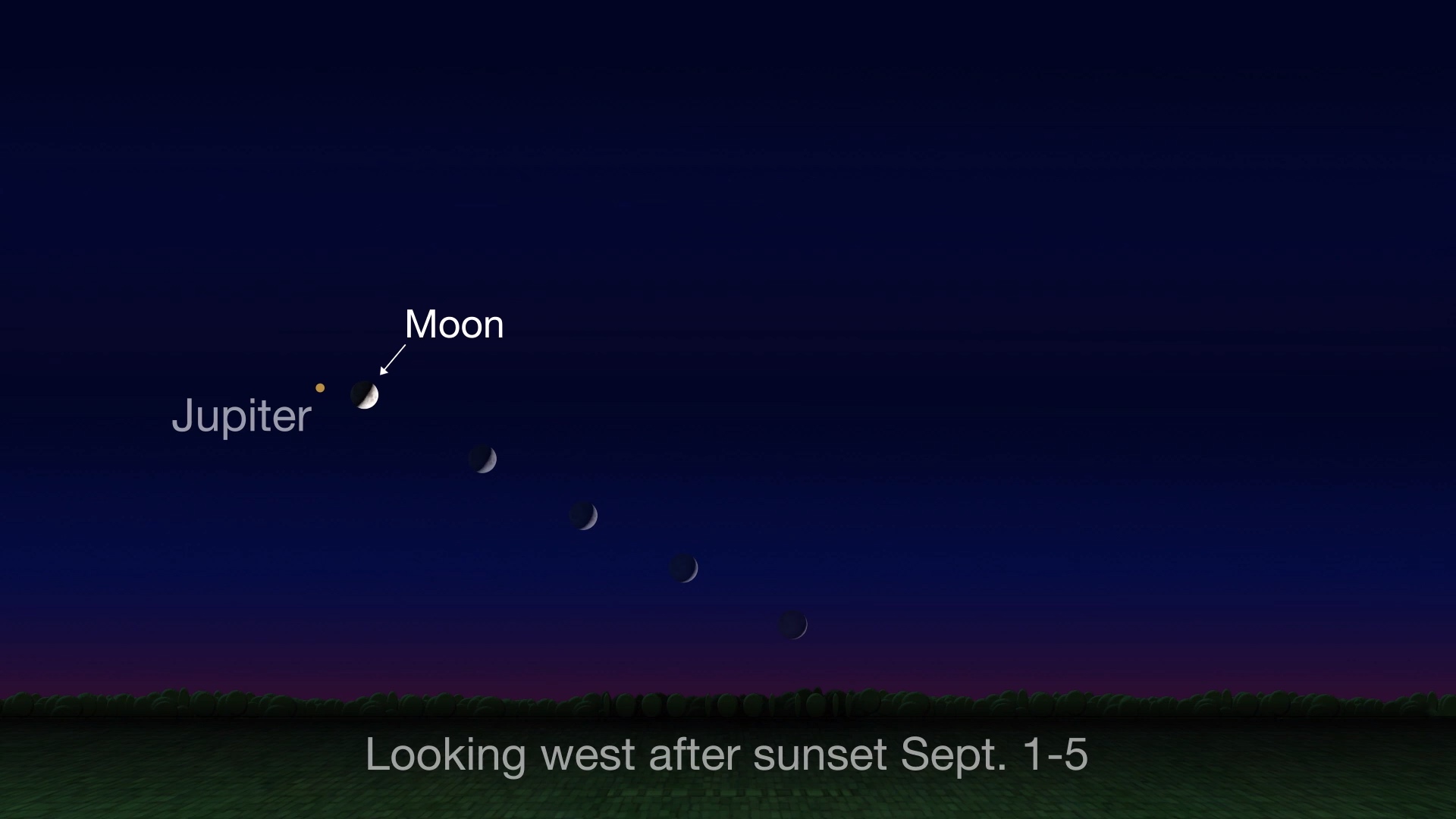Jupiter and the Moon Will Perform a Cosmic Cuddle Tonight! How to See It

If the sky is clear, you're in for a treat. The solar system's biggest planet — Jupiter — will nestle close to Earth's moon tonight (Sept. 5).
It's a pretty sight, even though this conjunction is all a matter of celestial geometry. On average, the moon is 238,855 miles (384,400 kilometers) away from Earth, and Jupiter is an average distance of 391 million miles (630 million km) away. But in our sky, they will temporarily appear super-close to each other.
The two worlds will make their closest approach in Earth's sky — just over 2 degrees apart — on Friday (Sept. 6) at 3:40 a.m. EDT (0740 GMT), according to In-The-Sky.org. For skywatchers in the U.S.,both objects will be below the horizon. But you can see them a few hours on Thursday evening, and they will still be somewhat close together on the night after the conjunction. (You can find out exactly when the planets are visible from your specific location using timeanddate.com's night sky calculator.)
Related: The Brightest Visible Planets of the September 2019 Night Sky
To catch the cosmic sight, look at the southern horizon Thursday evening and find the moon. Shining beside it to the left, at magnitude -2.2, will be the bright planet Jupiter. Both worlds are in the constellation Ophiuchus, the serpent-bearer. As a bonus, farther to the left of the bright pair is Saturn. On the night after the conjunction, Jupiter will appear on the right side of the moon and slightly farther away.
You can easily see Jupiter and the moon in the same field of view if you use your naked eyes or a pair of binoculars, but they are too widely separated to see in a telescope. However, using a telescope will be quite rewarding. The moon will be half full, and you can see a lot of crater detail along the line of the shadow — also called the terminator.
Jupiter has four moons visible in small telescopes — Io, Europa, Ganymede and Callisto — as well as bands of colorful gas in the planet's atmosphere. In small telescopes, you may even occasionally glimpse the Great Red Spot, a large storm that has continued at least since telescopes were first used in the early 1600s.
Breaking space news, the latest updates on rocket launches, skywatching events and more!
If clouds block your view, you have another chance to see worlds meeting on Saturday (Sept. 7): the moon and Saturn will also have a close approach in the dusk sky. Watch Space.com for more details.
Editor's note: If you snap an amazing photo of Jupiter and the moon and would like to share it with Space.com and our news partners for a story or gallery, send images and comments in to spacephotos@space.com.
- Space Launch Calendar 2019: Sky Events, Missions & More
- Rare Photos: Jupiter's Triple-Moon Conjunction in Pictures
- Bright Sights, Big City: Planets Align Over Manhattan in Gorgeous Photo
Follow Elizabeth Howell on Twitter @howellspace. Follow us on Twitter @Spacedotcom and on Facebook.

Elizabeth Howell (she/her), Ph.D., was a staff writer in the spaceflight channel between 2022 and 2024 specializing in Canadian space news. She was contributing writer for Space.com for 10 years from 2012 to 2024. Elizabeth's reporting includes multiple exclusives with the White House, leading world coverage about a lost-and-found space tomato on the International Space Station, witnessing five human spaceflight launches on two continents, flying parabolic, working inside a spacesuit, and participating in a simulated Mars mission. Her latest book, "Why Am I Taller?" (ECW Press, 2022) is co-written with astronaut Dave Williams.
